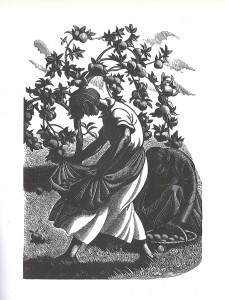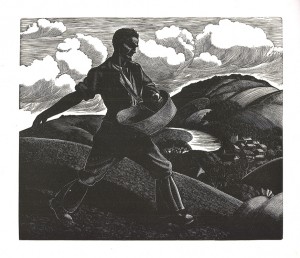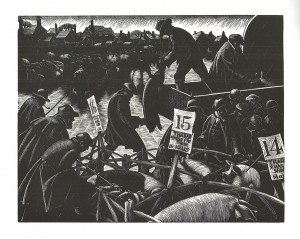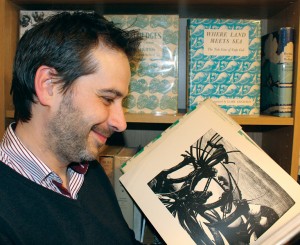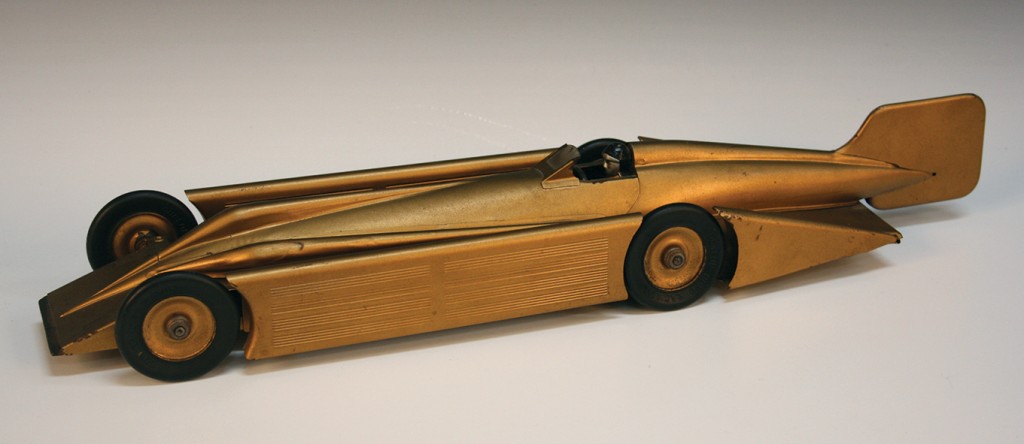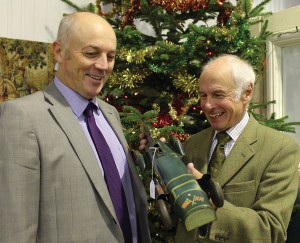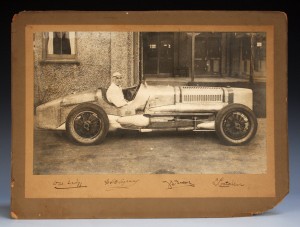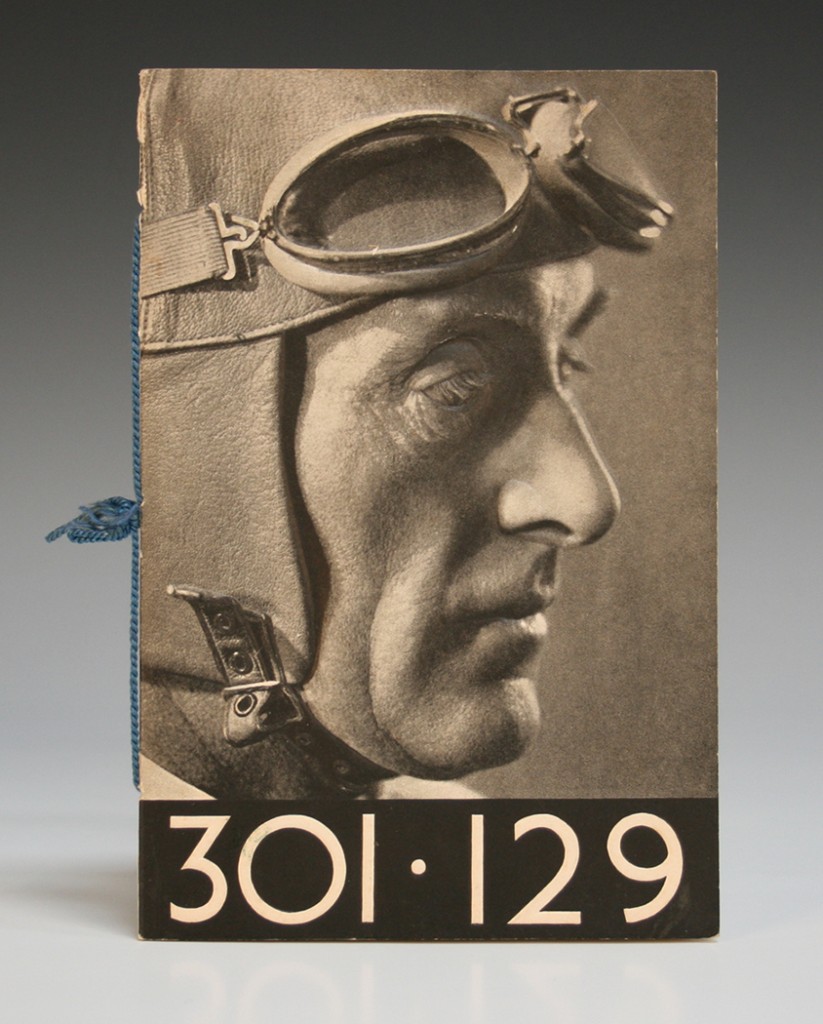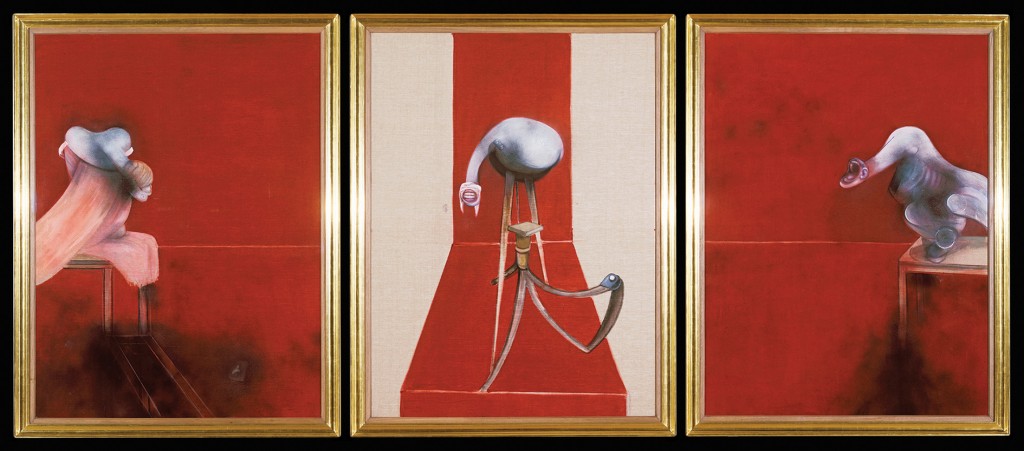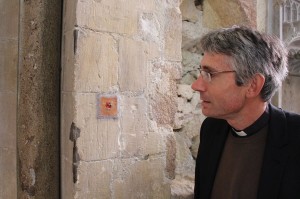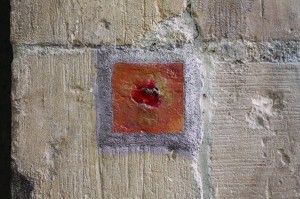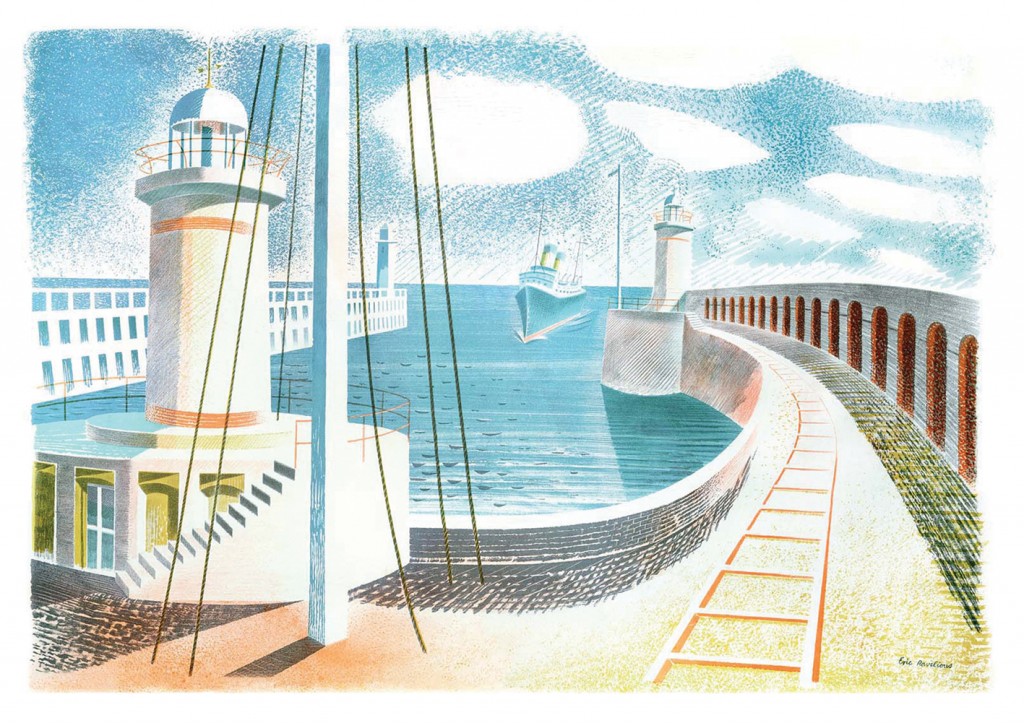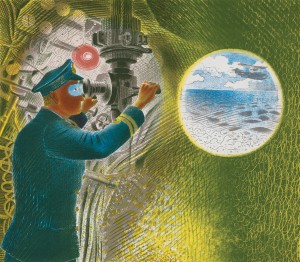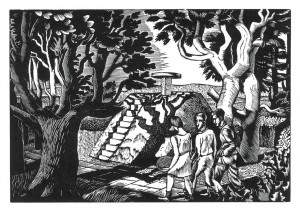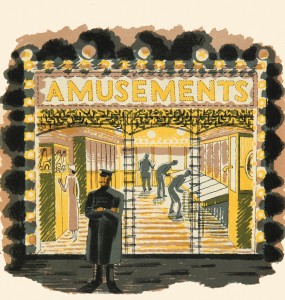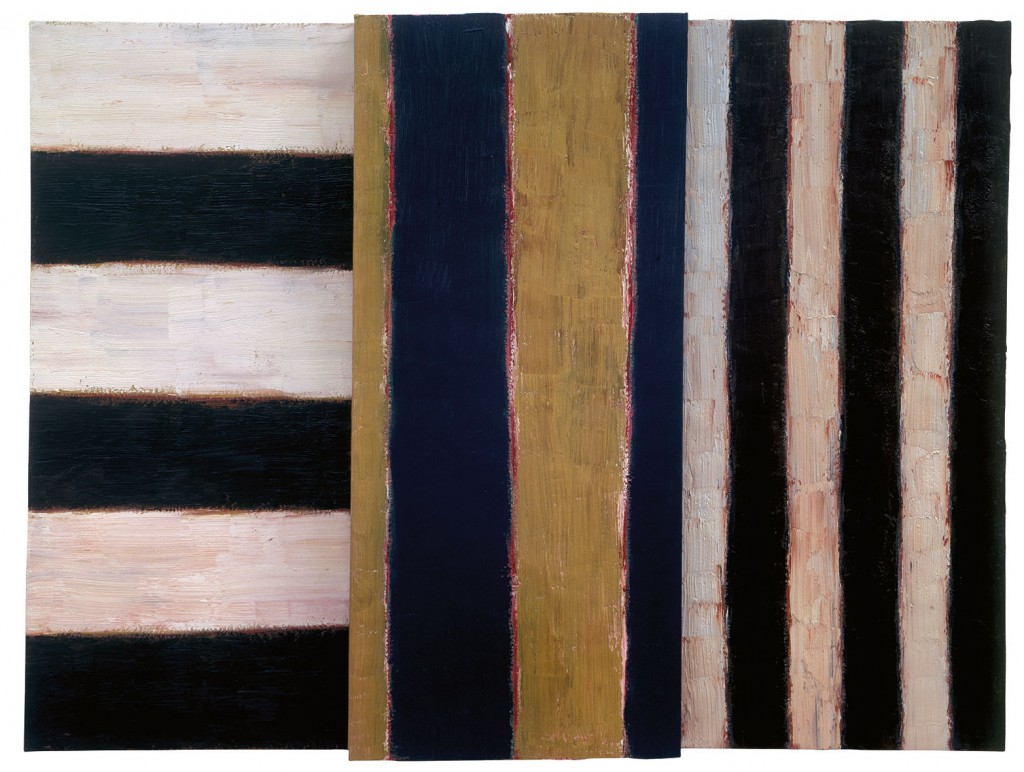
If you are in Sussex between now and the 24th January, treat yourself to the Sean Scully: Triptych exhibition at Pallant House Gallery in Chichester. Sean Scully, twice nominated for the Turner Prize in 1989 and 1993, is an abstract artist whose work is defined by panels of vertical and horizontal lines. His images are often arranged as triptychs. Sean Scully was born in Ireland and spent time in London before moving to New York.
His abstract work is uncompromising and demanding of the viewer’s attention. Stop and stare. As you reflect on the texture of the oil paint upon the canvas, or the effects of watercolour and ink on paper, you will become aware of the subtlety of tone inherent in the clear colour schemes of each image. Scully talks of his use of colours as being intuitive, of reflecting mood and circumstance. At a recent event, Scully described the importance of his “metaphysical relationship with materials, which of course is fundamental to all my work – that relationship between materiality and light”.
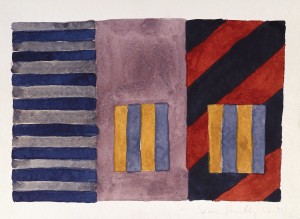
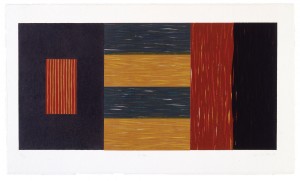
Much abstract art today is art reflecting on art. For me, this seems to be at odds with the gift of great artists to reflect upon the world we all share and to allow us, through their work, to glimpse something of what lies beyond our immediate perception. So for me, Sean Scully’s work is refreshing. It is connected to his life and the world. Music and literature also provide him with rich seams of inspiration. These resolute visual images can seem stark but there is an underlying quality of hope. Whilst Scully has an apparent and deeply held confidence in the work that he does, his approach is not without humility or sensitivity. He sees himself as a communicator and unifier, building bridges to make the world a better place. Through his pictures, he seeks to move people. He believes that this form of communication can help people to realize that they are connected and not isolated.
Scully describes the horizontal lines in his pictures as metaphors for land-lines or the horizon, whilst the vertical lines in his compositions represent the person and proclaim that ‘I exist’.
Simon Martin, Artistic Director at Pallant House Gallery, has noted that Sean Scully is “concerned with expressing a sense of spirituality”. Certainly, for Sean Scully spirituality is important, something he notes as a particular artistic quality in Ireland. He grew up in the Roman Catholic Christian tradition and has a fondness for the sensory quality of their worship with incense, bells, music and fine robes. But he is an eclectic soul, who seeks to speak across the boundaries of religious traditions. Scully feels that it is possible to manufacture prejudice, though he claims never to have experienced it. Instead, he maintains that if we project love into the world, it is reflected back to us.
The canvases which make up Sean Scully’s triptychs, although highly related, can at once be viewed individually or as a whole. It is interesting to note how they relate to one another when viewed together.
These abstract triptychs are stimulating on many levels and provide a narrative to human sorrow, joy and hope, with a particular directness and honesty. They regain a sense of reference to the richness and complexity of the world and what it is to be human. They allow us to glimpse something beyond our immediate perceptions.
We are exceptionally fortunate to have an artist of such international standing exhibiting in Sussex. Sean Scully: Triptychs at Pallant House Gallery, Chichester, runs until 26th January 2014. For further information go to www.pallant.org.uk or telephone 01243 774557.
By Revd. Rupert Toovey. Originally published on 8th January 2014 in the West Sussex Gazette.
